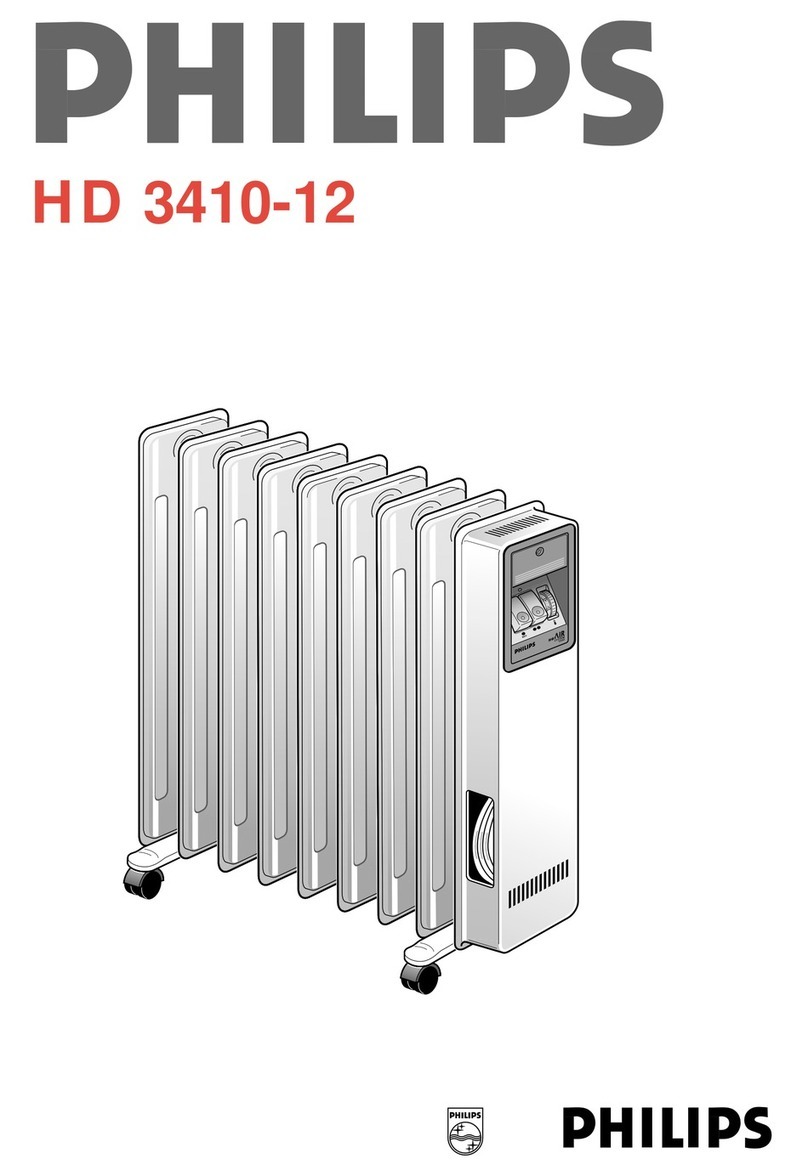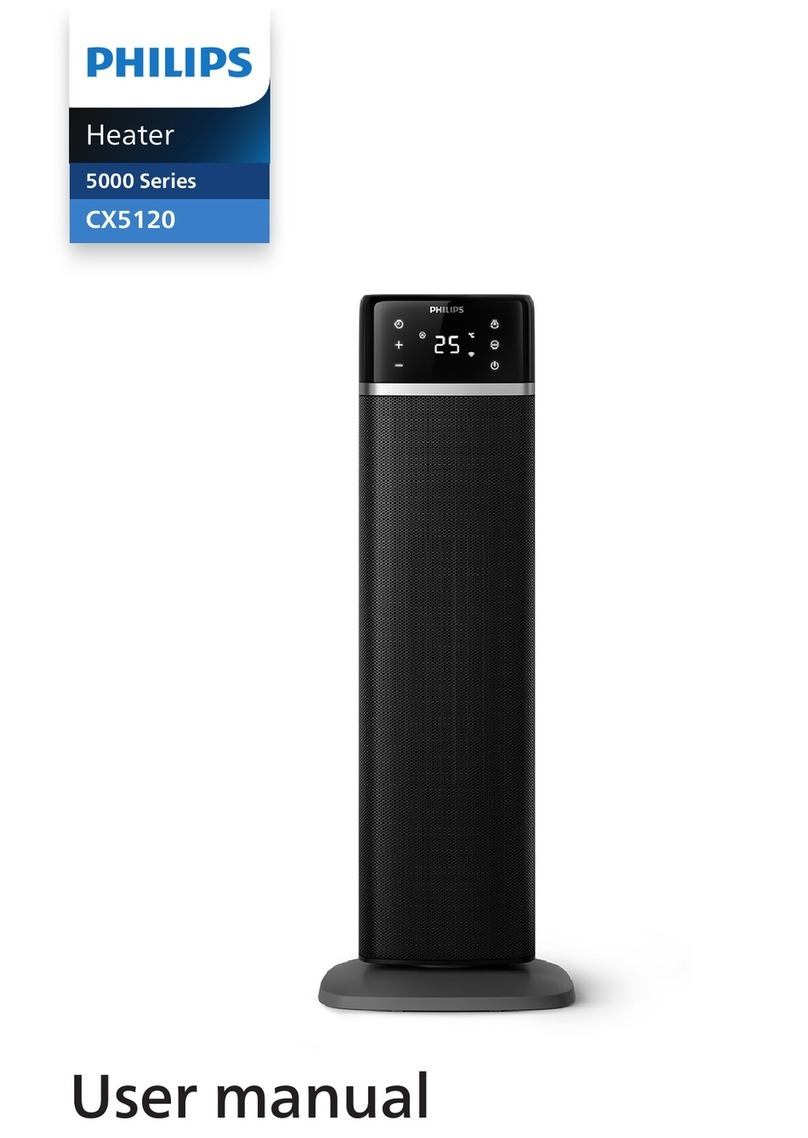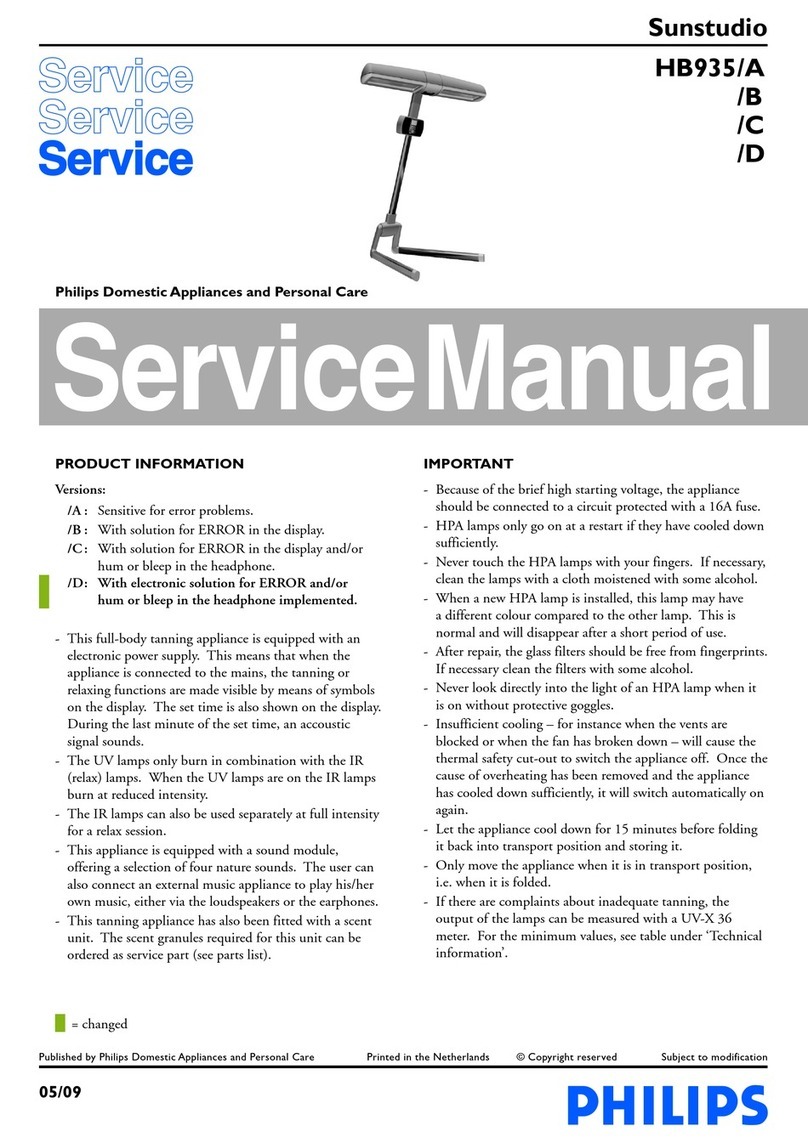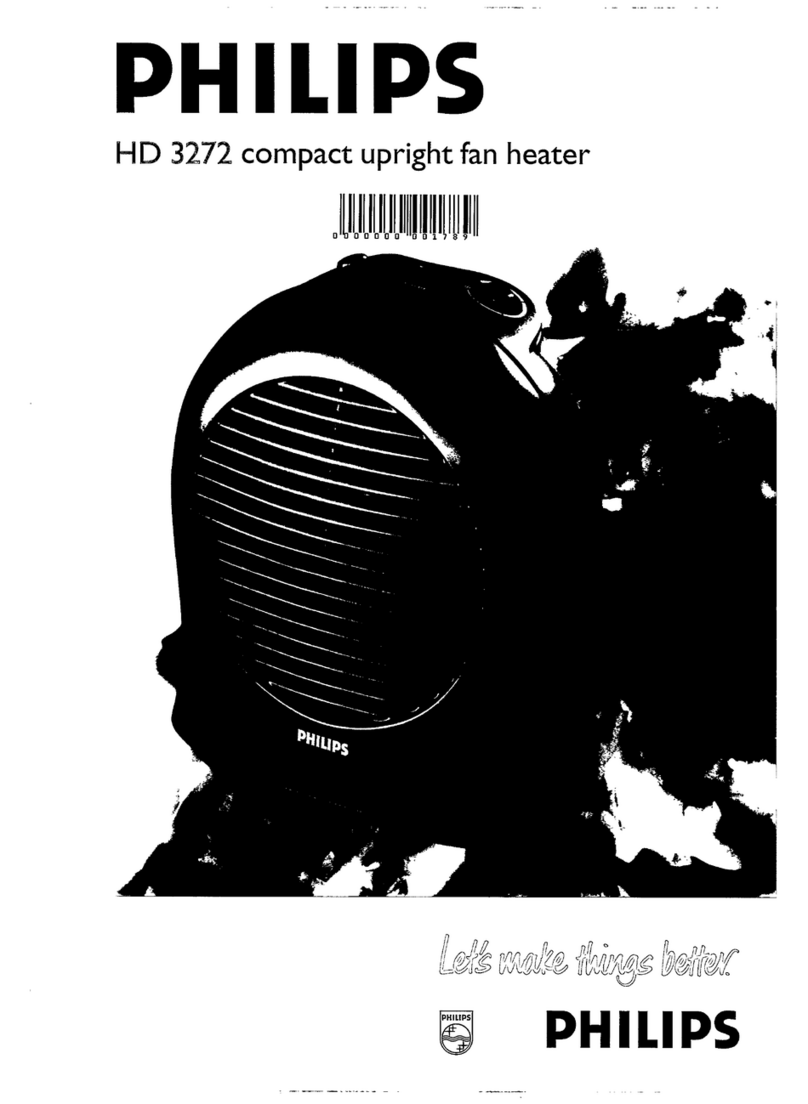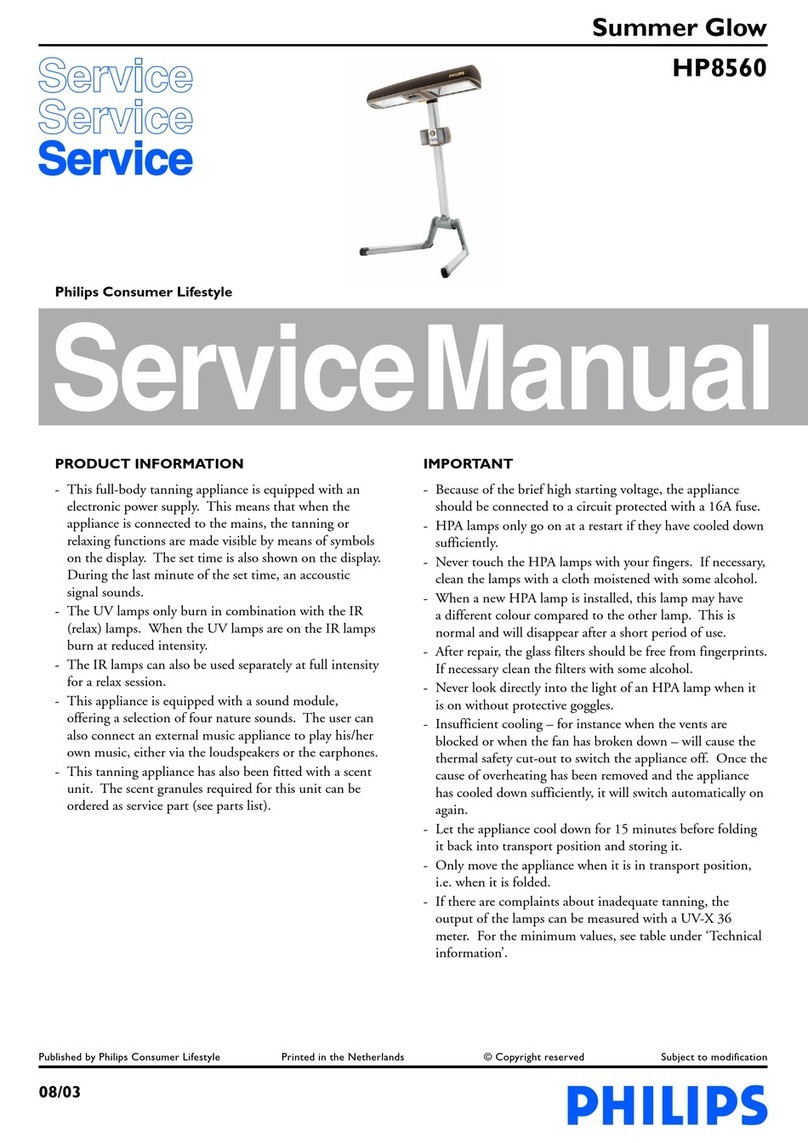Uhrzeigersinn; um die Temperatur herabzusetzen,
drehen Sie ihn entgegen dem Uhrzeigersinn.
Der Temperaturregler kann bei eingeschaltetem
Gerät bedient werden.
Um die gewünschte Temperatur einzustellen,
gehen Sie wie folgt vor:
- Schalten Sie das Gerät ein.
- Stellen Sie den Temperaturregler (D) bis zum
Anschlag auf die höchste Temperatur.
- Sobald die gewünschte Raumtemperatur
erreicht ist, drehen Sie den Regler langsam so
weit zurück, daß sich das Gerät ausschaltet.
- Das Gerät wird automatisch wieder
eingeschaltet, wenn die Raumtemperatur sinkt.
yFrostschutz-Einstellung
In dieser Position reagiert der Thermostat auf die
niedrigste Temperatur-Einstellung, nämlich +5° C.
Wollen Sie z.B. eine Wasserleitung vor dem
Einfrieren bewahren, dann stellen Sie das Gerät
in unmittelbarer Nachbarschaft der Leitung auf,
und wählen Sie diese Position.
Hinweis: Stellen Sie bei Position "Kaltluft" >
den Temperaturregler auf die höchste Position.
Die Kontrollampe (E)
- Wenn das Gerät an das Stromnetz
angeschlossen und eine der Positionen >, 1
oder 2eingeschaltet ist, leuchtet die
Kontrollampe.
- Die Kontrollampe leuchtet, bis das Gerät am
Geräteschalter (C) ausgeschaltet oder der
Strom unterbrochen wird.
- Diese Kontrollampe zeigt an, daß das Gerät am
Netz angeschlossen und betriebsbereit ist; sie
leuchtet deshalb auch, wenn der Geräteschalter
auf >, 1oder 2steht, und der Thermostat
das Gerät ausgeschaltet hat.
Der Überhitzungsschutz
Um Risiken und Schäden zu vermeiden, die durch
zu starke Erhitzung entstehen, schaltet der
Überhitzungsschutz das Gerät aus, sobald die
Heizelemente sich zu stark erhitzen.
Sollte dies geschehen, so verfahren Sie wie folgt:
- Vergewissern Sie sich zunächst, daß nicht der
Thermostat das Gerät ausgeschaltet hat.
Stellen Sie dazu den Temperaturregler (D) auf
die höchste Position.
• Halten Sie das Netzkabel von Lufteinlaß- und
Luftauslaßöffnungen und von heißen
Oberflächen fern.
• Achten Sie darauf, daß keine Aerosole,
entzündbare oder hitzeempfindliche Stoffe in
den heißen Luftstrom geraten.
•Stellen Sie das Gerät nicht auf einen sehr
langflorigen Teppich.
•Das Gerät darf nur in vertikaler Position
(vgl. die Abbildung), niemals aufrecht
stehend zu verwendet werden.
Kabelaufwicklung
Das Kabel kann zur Aufbewahrung des Geräts an
der Unterseite über die Gerätefüße aufgewickelt
werden. Wickeln Sie das Kabel jedoch vor jedem
Gebrauch vollständig ab!
Der Gebrauch des Geräts
Der Geräteschalter (C) und der Temperaturregler
(D) ermöglichen verschiedene individuelle
Einstellungen:
Geräteschalter (C)
O = Aus. Der Ventilator und die beiden
Heizelemente sind ausgeschaltet.
>= "Kaltluft": Nur der Ventilator wird
eingeschaltet.
1= "Warmluft" zum allmählichen Erwärmen.
ECO-Position: Der Ventilator und eines der
beiden Heizelemente werden eingeschaltet.
2= "Heißluft" zum schnellen Aufheizen.
Vollbetrieb: Der Ventilator und beide
Heizelemente werden eingeschaltet.
Temperaturregler (D)
Der Temperaturregler hält automatisch eine
konstante Raumtemperatur aufrecht. Steht der
Geräteschalter auf 1oder 2wird das Gerät von
einem Thermostaten eingeschaltet, wenn die
eingestellte Temperatur unterschritten wird, und
ausgeschaltet (bzw. von 2auf 1
herabgeschaltet), wenn die eingestellte
Temperatur erreicht ist.
Drehen Sie den Temperaturregler im
Uhrzeigersinn, um die Temperatur zu erhöhen,
und gegen den Uhrzeigersinn, um die Temperatur
herabzusetzen.
Um eine höhere Raumtemperatur zu erhalten,
drehen Sie den Temperaturregler im
10

